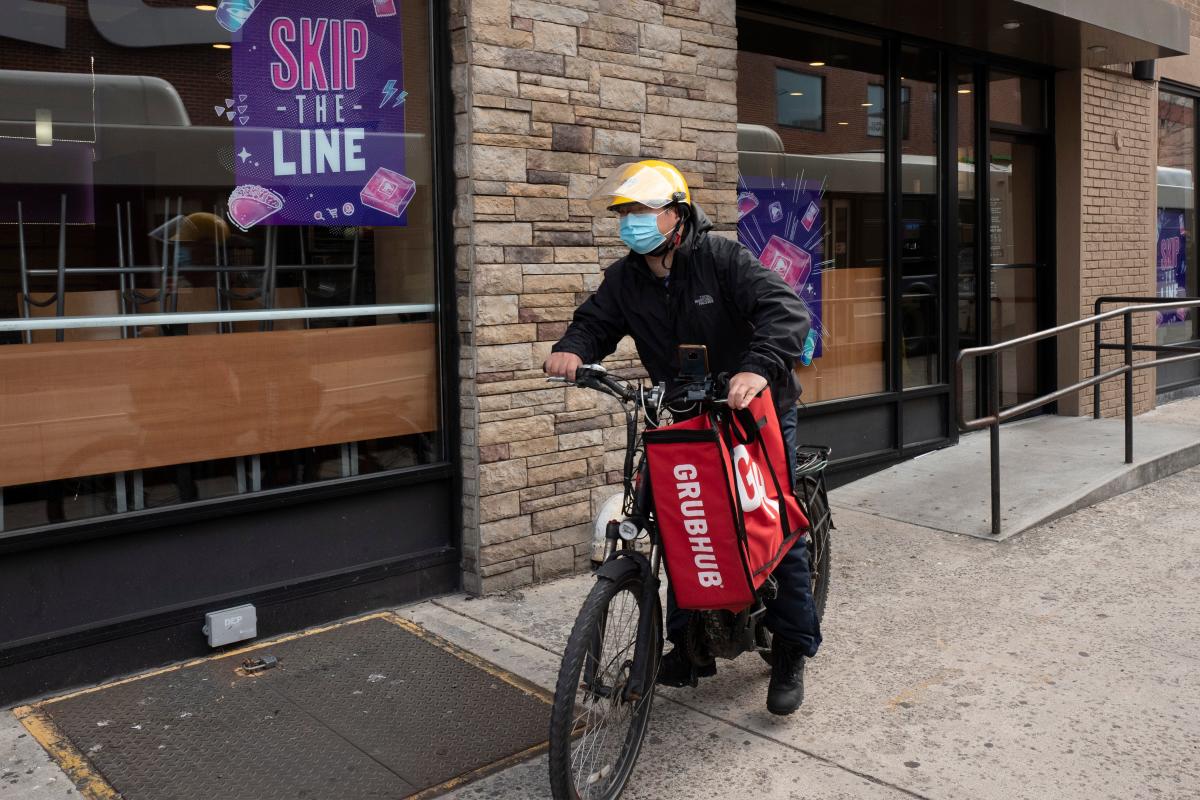Personal Finance
Why are Americans spending so much on Amazon, DoorDash delivery long after COVID’s peak?

Prices are up. The pandemic has eased. And yet, Americans seem to be spending more than ever for the convenience of having groceries, meals and household wares delivered to their doors.
The average delivery-service customer is spending $407 a month in 2023, up from $157 a month in 2021, according to a recent survey from LendingTree, the personal finance site.
Four-fifths of consumers reported using on-demand delivery in the past year. Millennials spent the most, $575 a month. Boomers spent the least, $153. The findings come from a July survey of 2,000 adult consumers, balanced to represent the overall population, conducted by QuestionPro for LendingTree.
On-demand delivery exploded in popularity at the pandemic’s peak, when many Americans hunkered down in their homes during lockdowns. In the three years since, society has largely returned to normal. Consumers have flocked back to restaurants, movie theaters and malls.
But Americans seem to be using home-delivery apps more than ever. Online food delivery, alone, generated $160 billion in revenue in 2022. That figure is projected to rise to $484 billion by 2032, according to industry researcher Market.Us.
“Since the pandemic, convenience has become an industry in itself,” said Vivek Astvansh, an associate professor of quantitative marketing and analytics at McGill University in Montreal. “I would not be surprised if, in the future, whatever you want delivered, there’s someone to do it.”
Danielle Demetria East, 26, started using delivery apps two years ago. After a while, she stopped: “It just wasn’t cost-effective.” Then, about six months ago, the apps lured her back.
“It was a coupon,” she said. “And then I was like, ‘I’ll try this.’ And a few friends were doing it.”
East now subscribes to DashPass, a premium membership service from DoorDash that offers reduced fees.
“I live in a food desert,” said East, of Lubbock, Texas. “The closest place to order food is, like, Sonic. It’s cheaper to drive to Sonic than to use the app, but other places across town, it’s cheaper to use the app.”
In the LendingTree survey, 82% of consumers said they used on-demand delivery over the past year. Of that group, roughly half said they had ordered delivery from Amazon or another retail service; two-fifths said they had paid for meal delivery by Uber Eats, DoorDash or a competitor; and about one-third had ordered grocery delivery from Instacart or a similar service. Smaller shares of customers ordered delivery of medicines or meal kits.
Convenience drives the rise in on-demand deliveries
By and large, the survey found, consumers chose delivery out of convenience. Among delivery customers, two-thirds said they didn’t mind spending more money to save time and effort.
“I think they’re willing to pay a premium for the convenience,” said Deidre Popovich, an associate professor of marketing at Texas Tech University. “Once people get used to having food delivered to them, it becomes more of a habit.”
And make no mistake: Home delivery costs money.
Delivery fees can cost more than food
Choosing delivery over a trip to the store triggers delivery fees, service fees and tips. Together, they make up about 36% of food delivery costs, according to a 2022 survey of 1,021 delivery customers by Circuit for Teams, a route-planning software company.
In dollar terms, the fees add up to $654 a year per customer, the survey found. The average consumer surveyed spends about $1,850 a year on delivered food.
In the LendingTree survey, nearly half of delivery customers said they were spending more than on the service they could afford.
More on delivery apps: Uber Eats will accept SNAP, EBT for grocery deliveries in 2024
Meal delivery wasn’t a habit for most Americans until the pandemic. Sales grew by 162% for the major delivery services between April 2019 and April 2020, when much of the nation sheltered at home, according to an analysis by Bloomberg Second Measure, which provides data on consumer trends and company performance.
The market continues to grow, albeit at a slower pace. Sales rose by 6% for the major meal-delivery apps between August 2022 and August 2023. DoorDash commands 65% of the market, Bloomberg Second Measure found, with Uber Eats, Grubhub and other players splitting the remaining share.
“The COVID-19 pandemic was a massive turning point when it came to delivery in this country,” said Matt Schulz, chief credit analyst at LendingTree, in the survey report.
“We began using them more, in part, because we didn’t have a choice, but millions of Americans found that they really valued the services in the end. They’ve kept using them as the pandemic has receded and other COVID-era trends have fallen by the wayside. They’ve even been willing to pay extra for these services as inflation has run roughshod over the country.”
It might seem counterintuitive that consumers would embrace a delivery industry that tacks on surcharges of 30% or 40%. On small orders, the fees can cost more than the food.
A big part of the surcharge is the tip, generally earmarked for the driver. Americans are growing weary of tips, as more shops adopt point-of-sale systems that prompt customers for ever-larger sums.
Factor in inflation, which has vexed the American shopper for two years, and delivery prices are higher now than at the pandemic’s height.
Remote workers are helping to sustain home-delivery apps
Popovich, the marketing professor, believes that remote workers are largely sustaining the delivery business.
Roughly 30% of all American work now happens at home, according to the latest data from the scholarly site WFH Research. Remote work increased dramatically during the pandemic and widely endures, especially among white-collar workers in large cities.
Popovich theorizes that remote workers have incorporated delivery services into their weekly routines, partly as a way to stay focused on work.
“I feel like at-home workers are probably looking for ways to creatively outsource some of their obligations,” she said. “Because then, you don’t have to be thinking about going out, and which store to go to, and how bad traffic is going to be, and where you’re going to park.”
East, the Gen-Zer from Lubbock, has become an ardent fan of the delivery app for the local Walmart, a store she used to frequent.
“I can quickly reorder stuff. All my receipts are saved in the app,” she said. “I don’t have to find a parking spot, stand in line at checkout, all that stuff.”
This article originally appeared on USA TODAY: Amazon, DoorDash delivery more popular than ever even after COVID peak
Read the full article here

-

 Investing7 days ago
Investing7 days agoMoldova breakaway region to face new power cuts on Saturday, officials say By Reuters
-

 Investing7 days ago
Investing7 days agoReebok Co-Founder Backs Syntilay’s New AI, 3D-Printed Shoe
-

 Side Hustles7 days ago
Side Hustles7 days agoHow to Survive High-Demand Seasons Without Losing Customers
-

 Side Hustles5 days ago
Side Hustles5 days ago5 Things That Could Significantly Impact Your Company in 2025
-

 Investing5 days ago
Investing5 days agoNFI Group surge after board reshaped with new appointments, chairperson By Investing.com
-

 Side Hustles7 days ago
Side Hustles7 days agoShake It Up — Dunkin’ Debuts Star-Backed Winter Menu
-

 Side Hustles6 days ago
Side Hustles6 days agoHow Failing 22 Times Paved the Way to My Success
-

 Make Money7 days ago
Make Money7 days ago9 Easy Steps to Begin Your Gold Investment Journey


















